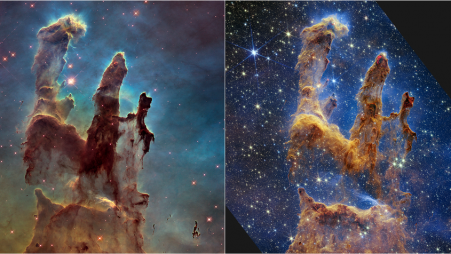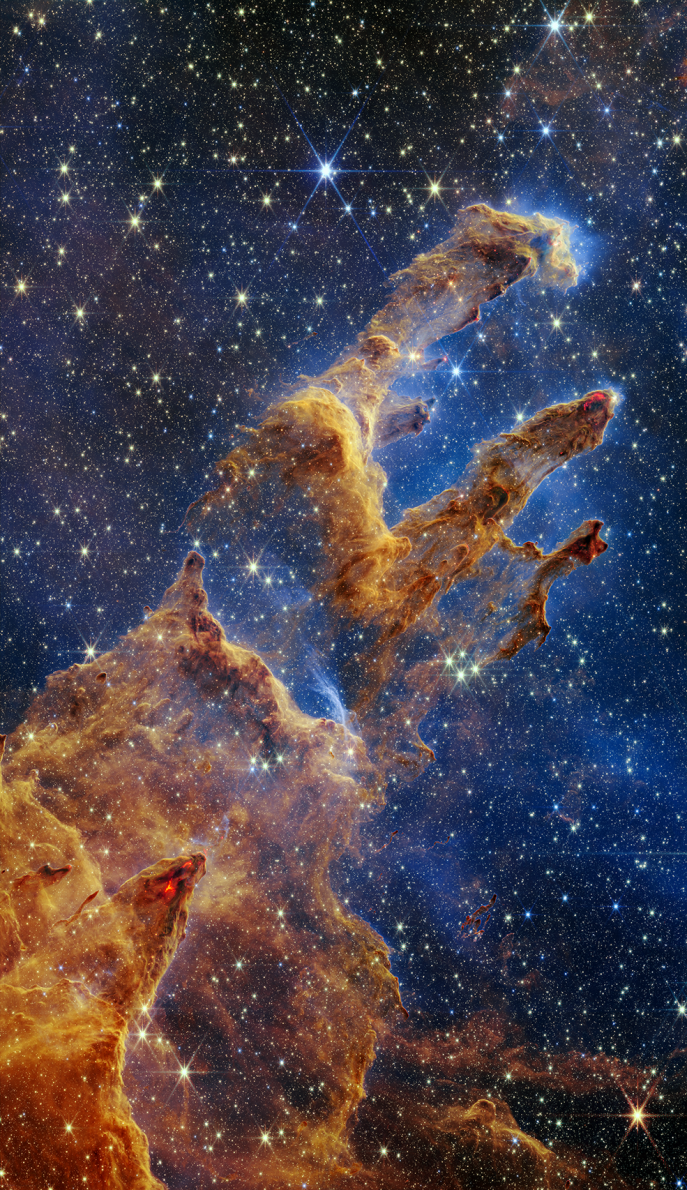James Webb Telescope takes star-filled portrait of pillars of creation

NASA's James Webb Space Telescope has captured the iconic Pillars of Creation, huge structures of gas and dust teeming with stars.
The world's largest and most powerful space telescope has taken its first shot of the gigantic gold, copper and brown columns standing within the vast Eagle Nebula, 6,500 light years away from Earth, the United States space agency said in a statement on Wednesday.
NASA's Hubble Space Telescope first captured images of the Pillars in 1995.
According to the NASA, "Webb's new view of the Pillars of Creation will help researchers revamp their models of star formation by identifying far more precise counts of newly formed stars, along with the quantities of gas and dust in the region."
Over time, they will begin to build a clearer understanding of how stars form and burst out of these dusty clouds over millions of years, they added.

Newly formed stars are the scene-stealers in this image from Webb's Near-Infrared Camera (NIRCam). These are the bright red orbs that typically have diffraction spikes and lie outside one of the dusty pillars. When knots with sufficient mass form within the pillars of gas and dust, they begin to collapse under their own gravity, slowly heat up, and eventually form new stars.
Although it may appear that near-infrared light has allowed Webb to "pierce through" the clouds to reveal great cosmic distances beyond the pillars, there are no galaxies in this view. Instead, a mix of translucent gas and dust known as the interstellar medium in the densest part of our Milky Way galaxy's disk blocks our view of the deeper universe.



 Keep updated, follow The Business Standard's Google news channel
Keep updated, follow The Business Standard's Google news channel















